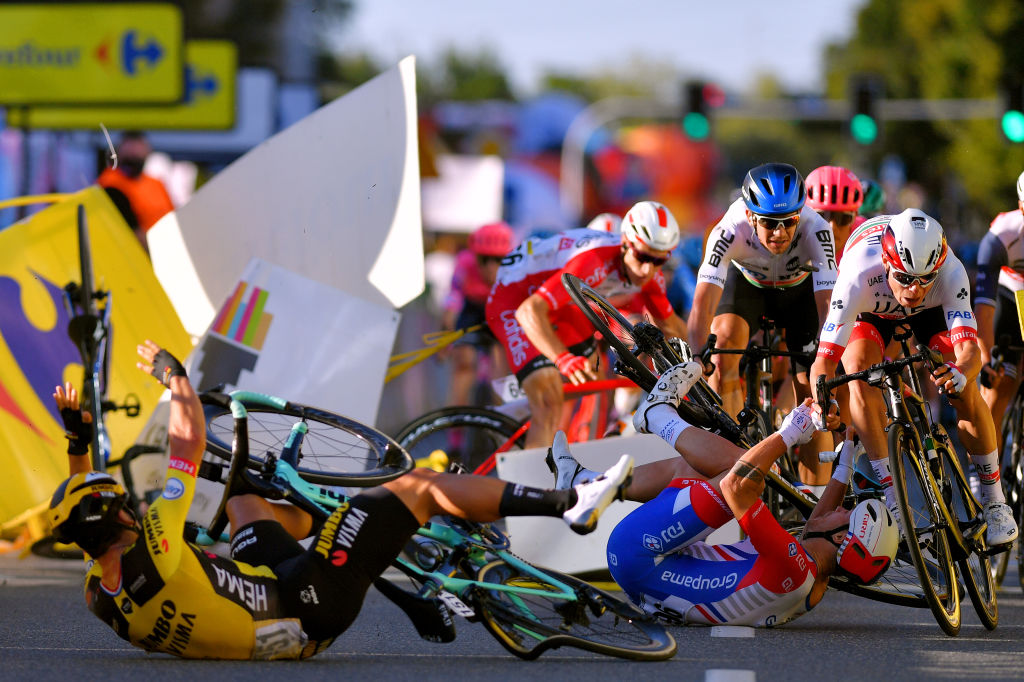Tour of Poland stage where Jakobsen crashed will not be used again, says UCI
Downhill sprint in Katowice ruled out as part of safety measures

Professional riders may object to the UCI's ban on the 'super-tuck' and pseudo time trial positions but will likely welcome new guidelines that will eliminate the Tour of Poland's high-speed Katowice sprint finish where Fabio Jakobsen (Deceuninck-QuickStep) crashed so violently in 2020. The move comes in addition to strict standards for roadside barriers to come into effect on April 1, 2021.
Jakobsen was elbowed off his line in the sprint by fellow Dutchman Dylan Groenewegen (Jumbo-Visma) and fell into the barriers, which then flew apart and into the path of the rest of the riders, resulting in several riders being injured. Jakobsen was the worst off with severe facial injuries and a concussion, among other wounds, from where he hit the edge of the barrier.
After the crash, made much more shocking because of how violent the impact was, riders pointed to the downhill run-in where riders regularly exceed 80 kilometres per hour as one factor that makes the finish too dangerous.
During a webinar this week, UCI road manager Matthew Knight agreed that the speed of the Katowice finale was too fast. "The finish was too high speed – it's the elevation change in that final kilometre," Knight explained.
The UCI announced sweeping measures to make road racing safer, which will include a safety manager for each event who will be tasked with evaluating the course, among other duties. The UCI has also partnered with an outside agency to examine crashes over the past five years and assemble a database to better determine which safety measures should be put in place.
"It's an example of where our course evaluation tools will be able to identify that and also the race incident database, to ensure that type of high-speed finish is no longer used.
"So that specific one in the Tour of Poland won't be used again and also to ensure that elevation change in the final that increases the sprint finishes from 15 to 20 kilometres an hour more is something that is not allowed."
Get The Leadout Newsletter
The latest race content, interviews, features, reviews and expert buying guides, direct to your inbox!
That doesn't necessarily mean that Grand Tour stages like the Tour de France finish in Loudenvielle after the descent of the Col de Peyresourde will be banned under the guidelines.
"Obviously there's other considerations such as the type of road, whether it's a bunch sprint, or not," Knight said.
"In a bunch sprint, a high-speed finish, the expectation certainly is no bends under 200 metres to go. So that's something we're actively working on and we are in touch with organisers on that and explaining that that's no longer accepted."
Cyclingnews is the world's leader in English-language coverage of professional cycling. Started in 1995 by University of Newcastle professor Bill Mitchell, the site was one of the first to provide breaking news and results over the internet in English. The site was purchased by Knapp Communications in 1999, and owner Gerard Knapp built it into the definitive voice of pro cycling. Since then, major publishing house Future PLC has owned the site and expanded it to include top features, news, results, photos and tech reporting. The site continues to be the most comprehensive and authoritative English voice in professional cycling.